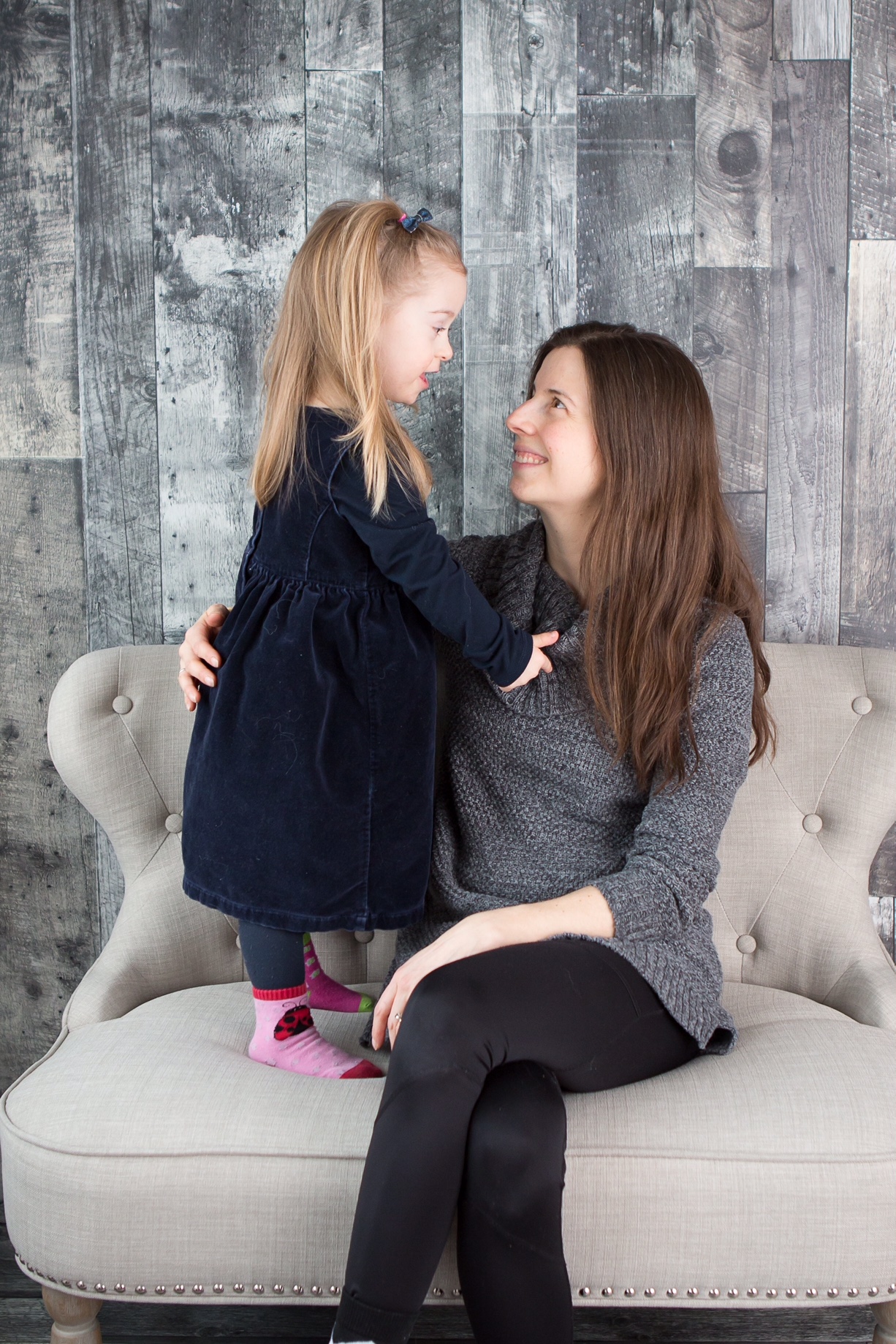
It’s funny how as parents we initially expect that our children will be perfect, despite knowing deep inside that we all have our flaws. I remember being heartbroken when my first “perfect” child was found to be quite farsighted at the age of two, and was prescribed glasses. I worried he would be bullied at school (many years into the future at that point!), that he would have difficulties playing sports, that he would have a hard time managing them at such a young age. In fact, he did fine – has never lost or broken them – is astoundingly athletic, and universally well-liked at school.
I remember being shaken when my second “perfect” child experienced an anaphylactic reaction to tree nuts at eighteen months, and needed to have an epi-pen in close proximity from that point onwards. My new worries involved trusting that anyone I left him with would have an adequate understanding of his life-threatening condition, and the knowledge of how to save his life should he inadvertently ingest a food containing hidden nuts. This took birthday party stress to a whole new level!
However, unexpected differences in my third “perfect” child were discovered before she was even born. When the midwife called two hours after our twenty-week ultrasound, I sensed something was off. This hadn’t happened in either of my previous pregnancies. She explained that they had noticed a couple ‘soft markers’ for Down syndrome, and referred us to a genetic counselor immediately. We decided on the non-invasive prenatal test (NIPT), only recently covered by OHIP, involving just a blood sample. This NIPT came back a week later from lab analysis in California showing a 99% chance our baby had Down syndrome. This news hit us hard. We didn’t have much personal knowledge of the condition, only general stereotypes that we came to discover were outdated. I was a physical therapist by training and had worked with many people with various disabilities, but only one of my clients had Down syndrome, and he had been a wheelchair-bound man in his fifties with severe leg deformities and a very poor quality of life.
The old-school Geneticist we subsequently saw was not very reassuring – presenting a lot of worst-case scenarios; a ‘doom and gloom’ approach. The option of terminating the pregnancy was floated around by various professionals, as if this unborn child did not deserve a chance at life, despite our firm responses that we *wanted* our child. That being said, we certainly grieved the “perfect” child we had been expecting. Then we picked ourselves up and started researching, reading, and reaching out to our local Down syndrome association. The new parent coordinators immediately showed up with their smiles and warm words of congratulations, and helpful, accurate materials. We could already see that a brighter future was possible than the dark picture painted by that first doctor. We took tentative steps towards connecting with this new community and felt supported.
One serendipitous encounter happened while walking home from dropping off our first-born at Junior Kindergarten, where he had started only a few weeks prior. The prenatal diagnosis of Down syndrome was fresh, and I was still coming to terms with it. Another mom was also returning home from JK drop-off, pushing a stroller with a sleeping babe. We started chatting, and this mom – Sarah – shared they had just moved to the neighbourhood, after a prolonged hospital stay with their new son after his birth. I had recently read that newborns with Down syndrome frequently have complications necessitating hospital stays, and so I tried to commiserate, telling her that I was six months pregnant with a baby who would be born with Down syndrome, and so might have a long hospital stay in my future as well.
She stopped in her tracks, looked at me, and told me that her son also had Down syndrome.
I had no idea. I was honestly just “practicing” sharing my news with people, and as a stranger, Sarah somehow seemed easier to tell than a family member! It was such a profound moment; we both felt goosebumps. Needless to say, knowing another mom in my immediate community who was only a few months further down this journey provided immense comfort, both then and now.
Of course, the journey is never smooth. At thirty-three weeks into the pregnancy, the right side of my face slowly became paralyzed over the course of an evening. We rushed to the ER, fearing a stroke, and in time learned it was “only” Bell’s Palsy. Unfortunately it didn’t resolve as quickly as it usually does – my body was more concerned with other pressing matters, like growing/birthing/feeding a baby! And so I experienced what it was like to have a face that looked “different”, to have people stare, wonder, question. To have difficulties talking, eating, tasting, hearing. Part of me wondered if this was somehow preparing me to be able to empathize with my daughter’s future experiences. We are such visual beings who value our appearance more than we might like to admit. Another part of me was secretly scared that my new babe would not learn to smile properly, as she wouldn’t see a “proper” example on her mother’s face… or that my children might somehow be embarrassed by my twisted mouth. The strong steroid and anti-viral drugs the neurologist prescribed, and that I took while pregnant against my better judgement, turned out to be of no use. Various other therapies I tried (acupuncture, osteopathy, essential oils) were no better. My face remained completely flaccid for four months, and recovery came only in tiny increments thereafter. More than four years later I still can’t properly smile, but at least I can blink again;)
Our daughter Kaitlyn arrived at full term, a healthy 7 lb. 13 oz., screaming her way into the world. My midwives were amazing, one even going above and beyond by coming in during her vacation time to be present for the birth. The on-call paediatrician examined her, and couldn’t think of any reason to keep us in hospital, and so said, “I guess you should at least stay for 24 hours”. This was significantly longer than we had stayed for our previous births attended by midwives, but given the circumstances, we were thankful. It allowed time to have an echocardiogram done, which showed only a minor Atrial Septal Defect, which had no clinical symptoms or relevance. We had the healthy baby we had prayed for.
One thing that had been worrying me towards the end of the pregnancy was Kaitlyn’s ability to nurse. Breastfeeding was very important to me, and I had read in several places that newborns with Down syndrome had a more difficult time with this due to generalized low muscle tone, along with altered oral structure (a narrow, high palate, for example) and general drowsiness in the early days. My first two children had been exclusively breastfed, and in fact, my second son had continued to nurse all through Kaitlyn’s pregnancy, despite the usual dip in supply. In hindsight, I believe this was a gift to Kaitlyn as tandem nursing them both during her early life meant he did the work of bringing in the milk, ensuring adequate supply despite her weak latch, and allowing her to grow and thrive during those crucial first days and months. She became a stellar nurser – a beautiful chubby baby. It turned out that I had nothing to worry about at all. This was only my first example of how, with a little support, she could blow preconceived notions out of the water.
In the early days, I remember reading a book about parenting a child with Down syndrome that advised teaching your child to read before entering the school system, so the teachers would be presented with clear evidence that your child could learn, and then would approach them with greater respect. While this all sounded grand, I really doubted that I would be able to do this. After all, I felt like I was barely keeping my head above water while taking care of three young children. My previous two typical kids were reasonably bright and had only learned to read at the relatively early age of four while in Junior Kindergarten, not beforehand. How was I going to find time to be able to teach my preschooler with Down syndrome to read, or even have the knowledge of how to do this? Well, once again, with some unexpected support, my daughter again blew past my expectations. Around the time Kaitlyn turned two, my own mother uncovered a dusty box of flash cards in her basement that she had used with me when I was a toddler. She sent them my way, and I decided to try a modified version of the Glen Doman method that my mom used with me – just a few minutes a day, a few words at a time. It turned out that Kaitlyn loved learning words on flash cards, and after only a few sessions could accurately either sign or say the word I showed her. In a few short months her word count was into the hundreds. I first noticed her spontaneously reading her simple board books out loud when she was only three, and now at four she loves reading more complex stories. We have yet to see how this will translate into more respect in the school system when she starts this coming fall, but I believe that it will open up pathways for her. My hope is that she will continue to inspire all of us to aim higher, and achieve beyond our wildest dreams.
Karen Kendel worked as a physiotherapist before focusing on raising her three children. She currently lives in Milton, Ontario.
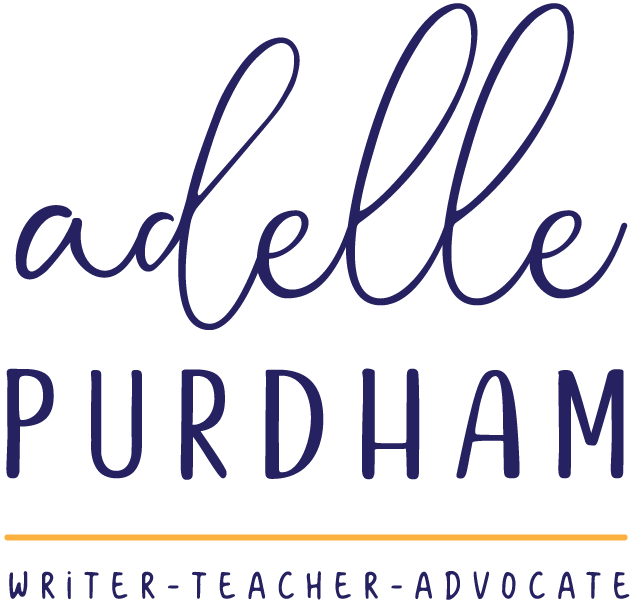
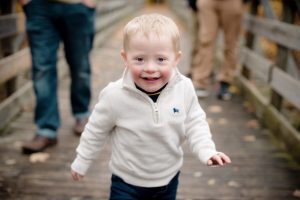
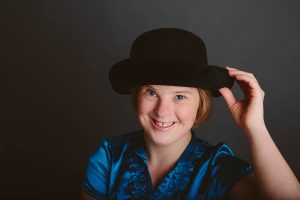
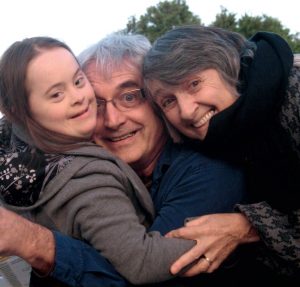

3 Comments
Karen, I love the story of the serendipitous encounter between you and Sarah, and the way life and people are never “perfect”, but how things have a way of sorting themselves out. Kaitlyn is a remarkable little lady and I can’t wait to see how far she will go. Thank you for sharing! Xo
What a great story Karen (and Adelle)! I hope it reaches many new Moms!
Karen wrote a beautiful piece! I hope you will consider submitting too, Oksana!